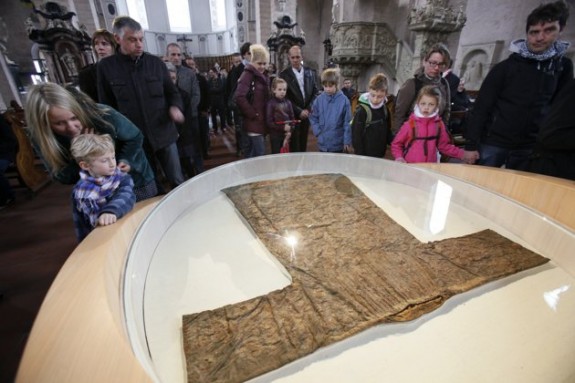It’s just gone on display, for the first time in decades:
Over the next four weeks, around a million German Christians will be travelling to Trier to admire the “Heiliger Rock”, or the Holy Robe: one of the most important relics in German Christendom, that Jesus supposedly wore before being crucified. Stephan Ackermann, the Bishop of Trier – Karl Marx’s home city – has decided that the robe will be put on display for the eighteenth time in its history, until 13 May.
According to legend, Helena – the mother of the Roman emperor Constantine – brought the seamless garment to Germany, while the first documentary evidence to mention the relic’s presence in Trier dates back to 1196. Meanwhile, Prüm Abbey has the sandals that belonged to Christ. These, together with the Holy Robe and many other relics venerated by the Catholic world, attracted the scorn of Martin Luther, who referred to them as “junk”.
What is different about this year, is that this time Protestants will also be coming to admire the Holy Robe – which was last displayed in 1996 – even though the evangelical church continues to deny the religious value of the relics. “Join together what is separated”: this is the concept, inspired by ecumenism, that the German Catholic Church has used to invite German Christians to undertake a pilgrimage to Trier.
















